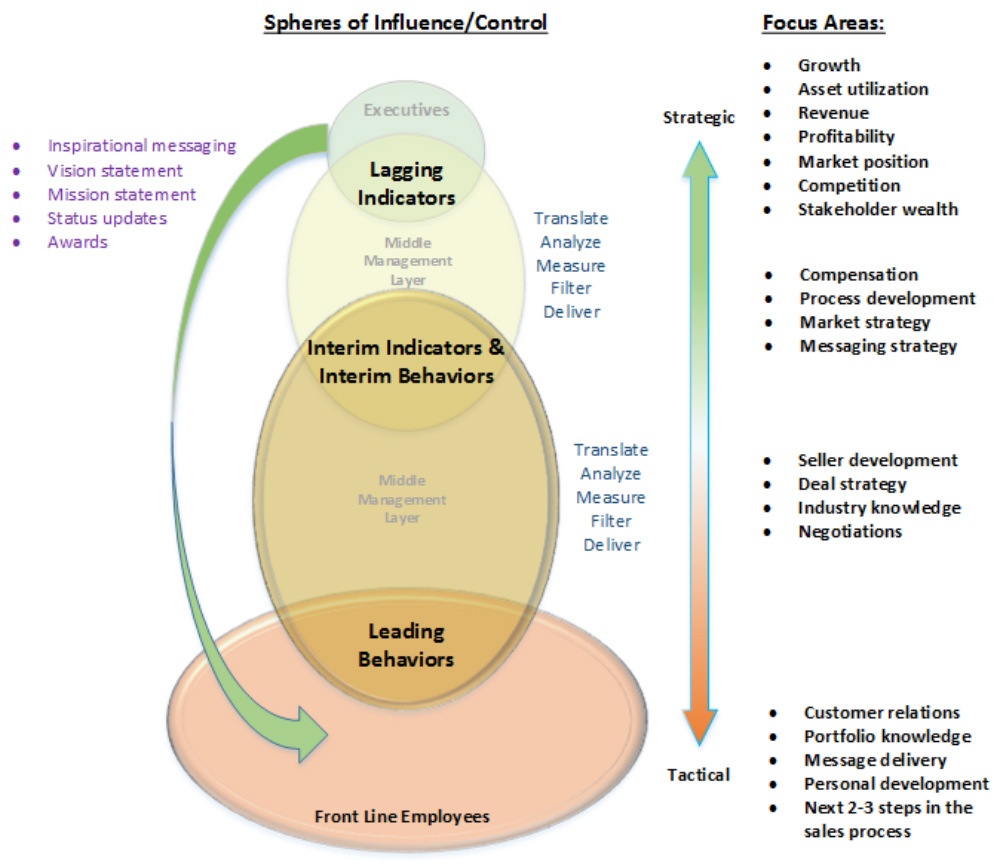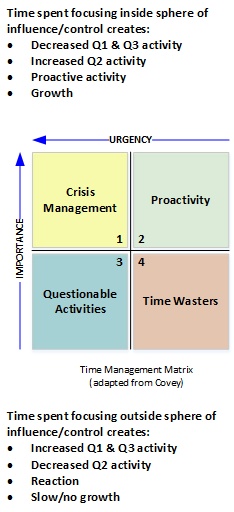
Swahili v. Swedish: Driving Focus in the Sales Engine
What I’m about to say may not sit well with some C-suite folks, but here it goes: What you have to say to the troops might not be what they need to hear. Yes, yes, you are the boss and, like E.F. Hutton (anyone remember them anymore?), when you talk, people listen. And if you’re the typical CXO, your day-to-day concerns are a world away from what a front line seller is concerned about. You may as well be speaking Swahili and the sellers Swedish.

You’re primary concerns are growth, asset utilization, cash flow, profitability, stakeholder wealth… The poor schmucks getting beaten up by their sales managers are concerned with how they’re going to get past the gatekeeper admin person to get a half hour with a director, trying to identify the person or people pulling the trigger on this deal and what their WIIFMs are, does their deck contain what the client really needs to hear, and will I still be able to take that family vacation this summer if this deal falls through. PLUS, they’re also juggling whatever it is you said to them in the last all-hands meeting. Swahili and Swedish. Mercury and Neptune.
Lack of focus may just be the single most detrimental factor in why a sales engine misfires. And, if the sales manager sounds remotely like the CEO and is using words such as revenue and cash flow thinking it’s their duty to carry the CEO’s message to the troops, or even starts talking to the seller about delivery options when she’s still trying to assess the client’s needs, then focus is being taken away, not provided in a timely fashion. Perhaps worst of all is when a manager to seller conversation can’t rise above the topics of deal size and close dates, where focus is completely misdirected away from actionable next steps by the seller.
Fundamentally, focus drives performance. Ask professional athletes how they tune out the distracting crowd noise and they’ll tell you they focus on what it is they need to do next. What can a sales manager do to help the seller tune out distractions and focus on what they need to do next? Exactly the same way; remove the interference that’s causing that seller to get stuck at a particular stage of the sales process.

To accomplish this, several things have to happen (by no means is this an all-inclusive list):
- The message from the C-suite has to be modified. At each middle management stage, the message from the stage above has to be translated into terms that are relevant and directly actionable to the stage below. The directive to increase revenue by X% from the C-suite might mean deal velocity is lagging and product offerings aren’t aligned to the market correctly at the next middle management level down. This in turn might drive a downward focus on how long deals are allowed to flounder before they’re killed off, and whether a market adjustment is on its way, and so on. Notice that neither of these sound anything like, “increase revenue by X%”, which is distracting to the ultimate task at hand, which is what research marketing has to undertake and what interaction does the seller have to have with the client to determine if they should walk away from deals or not.
- The C-suite message has to be translated and filtered into a very few actionable behavioral goals. If the manager to seller conversation includes the topics of increasing revenue by X% and increasing deal velocity, then all the sales manager did was add noise and distraction which will mitigate the effectiveness of the seller. This is another enormous problem: Without behavioral change, needles will not move. Too frequently, we focus too much on measurement and not enough on behavior.
"Too frequently, we focus too much on measurement and not enough on behavior"Of course, the system also has to support the behavior, so systemic change may also be necessary prior to behavioral change. See Deming’s Red Bead Experiment to understand this in more detail.Bob Britton
- The sales manager has to know if the seller’s problem is a knowledge gap or a performance gap. There are a variety of ways to assess this. Use of a commercially available sales competency assessment will help identify “knowing-doing gaps” and point the manager toward focusing on coaching (doing gap) or if the training group first needs to be engaged (knowledge gap).
- The sales manager has to understand what is within the sphere of control of the seller. We’re talking direct control here, cause and effect; if a seller does X, then Y happens. Truthfully, there is no one thing a seller can do to cause a deal to close faster or increase the deal size, both of which are lagging indicators. Interestingly, this may be a paradigm shift for many managers, if for no other reason than people lead the way they were led; they were beaten up over things beyond their direct control, so it must be the way to get things done.
- It’s all about the seller. If you’re not spending a significant amount of time developing your sellers by helping them focus, and I’m talking perhaps 40% to 50% or more of your day-to-day activity, then you don’t understand the leverage you can attain by having a well-tuned, focused team working for you. You may have what is known by some as a “Hero Complex”. Learn to take your credit vicariously.
The result of not translating and filtering the C-suite message for consumption by the front line sellers is lack of focus and distraction from the true task at hand, which is driven by the front line manager/leader. If we tie this back to Covey’s Time Management Matrix, people need to focus on what is within their areas of influence (control).

While the C-suite certainly has influence over the rest of the organization, it is usually not direct and is, pragmatically, done through layers of management; their time is actually spent on other more strategic focal areas – areas over which front line sellers have only distant, indirect influence. To include these strategic concepts in the manager to seller messaging is actually counterproductive because it’s nothing a seller can directly impact. The seller’s focus is misdirected, and far too much time is spent in Quadrants 1 and 3. There may be times in the sales cycle when more strategic concepts need to be brought into play, for example when negotiating or on particularly large, complex, global deal, but it’s the responsibility of the seller’s leader to bring those strategic concepts in at the appropriate time and keep that seller focused on the next few steps they are about to take, and on behaviors that are directly within their control.
In essence, the job of the various middle management layers is to translate CEO Swahili into seller Swedish. Bora wa bahati – I mean, Lycka till!
Time to break down the language barrier? A sales process helps establish a common terminology.

By Bob Britton
Bob has been in sales and training for more than 20 years. He approaches corporate training through the lens of an MBA, understanding the dynamics of complex services, manufacturing, and sales environments, while simplifying it all so stakeholders across an organization communicate effectively. Bob leverages his military and corporate experience to build and lead teams which focus on cross-functional knowledge management, performance improvement, and paradigm alignment. Importantly, Bob understands how the field of training must adapt to the changes in marketplace, and how training must transform from a traditional information delivery function to a trusted business partner, which directly and measurably impacts behaviors to move the business needles.
Find out more about Bob Britton on LinkedIn








